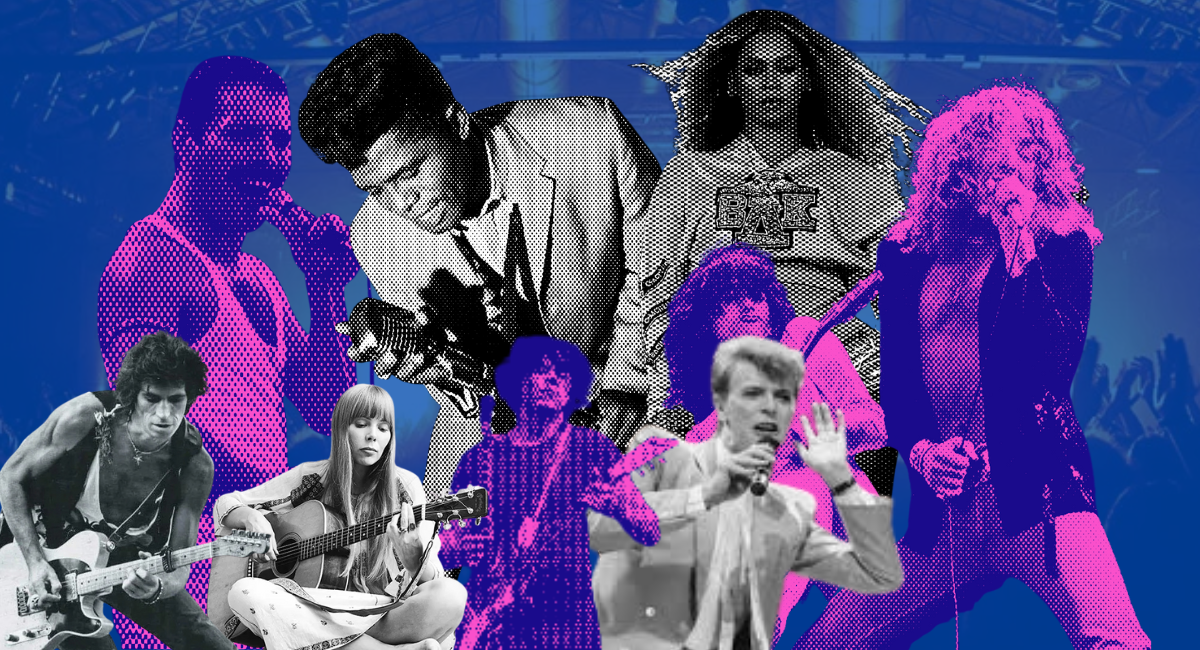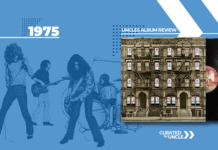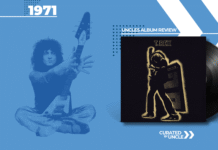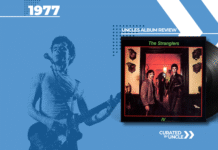Because Watching a Band Try Not to Collapse Onstage Is Weirdly Entertaining
Welcome to The 50 Greatest Live Albums Of All Time, Once upon a time – before Beyoncé turned concerts into perfectly choreographed space operas and half of Coachella became AI-generated avatars – live albums were raw, unpredictable and occasionally a bit crap (in the best way). There was feedback. Strings broke. Drummers collapsed. And if you were lucky, someone in the band had a breakdown mid-song.
These are the albums that captured it all – the euphoria, the mistakes, the roars of real crowds rather than looped samples of polite clapping. Whether you’re a fan of punk, funk, or long-haired men screaming over 18-minute solos, there’s something here for you in The 50 Greatest Live Albums Of All Time.
50. Under a Blood Red Sky – U2 (1983)

Genre: Post-punk with a messiah complex
Why It Matters: This is the moment U2 went from angry Irish blokes to stadium-dwelling deities.
Context: Recorded at Red Rocks Amphitheatre – basically a Bond villain lair carved out of stone – this mini-album turned a damp night and a lot of reverb into a mythological event. Bono climbs things. The Edge sounds like he’s strumming the rings of Saturn. It’s all very dramatic.
Highlights: “Sunday Bloody Sunday” stomps with righteous fury, while “New Year’s Day” broods like a teenager who just discovered politics. The echo alone deserves its own credit.
Why You Should Listen: Because it’s the sound of a band realising they’re about to take over the world – and deciding to do it with delay pedals and Biblical overtones.
49. Homecoming – Beyoncé (2019)
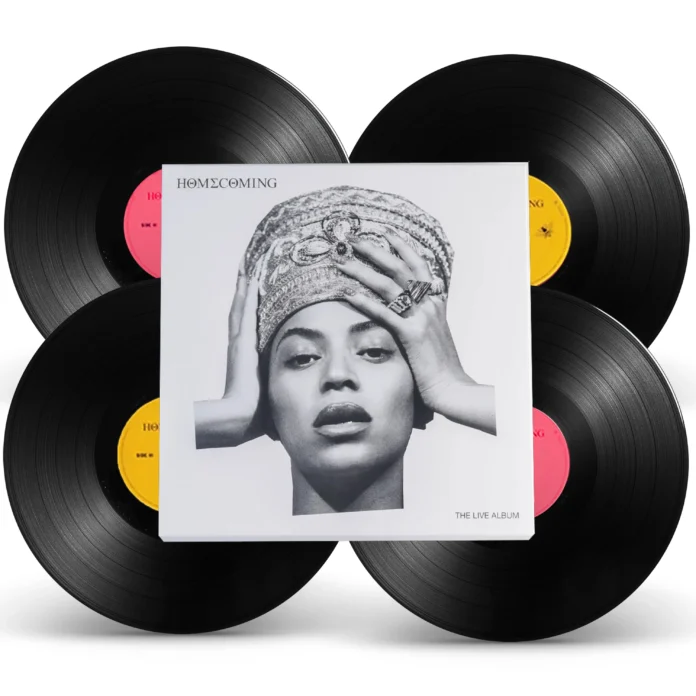
Genre: Pop, R&B, Cultural Earthquake
Why It Matters: Because this isn’t just a live album – it’s a masterclass in performance, precision and power. Beyoncé didn’t just headline Coachella. She colonised it.
Context: Recorded over two nights during her historic 2018 Coachella set, Homecoming is Beyoncé’s live opus – a dazzling tribute to Black culture, historically Black colleges and her own bulletproof catalogue. The meticulousness of the arrangements, the stamina, the costume changes, the marching band that somehow doesn’t miss a beat – it’s all here.
Highlights: “Crazy in Love” is transformed into a drumline-driven epic. “Freedom” and “Lift Every Voice and Sing” are delivered with spine-tingling conviction. And the Destiny’s Child reunion? An actual cultural reset.
Why You Should Listen: Because even if you’re allergic to pop music, Homecoming is undeniable. It’s a celebration, a protest, a flex and an education all wrapped in one glittering, sweat-drenched megashow. Beyoncé raised the bar for live albums and then pole-vaulted over it in heels.
48. Made in Japan – Deep Purple (1972)
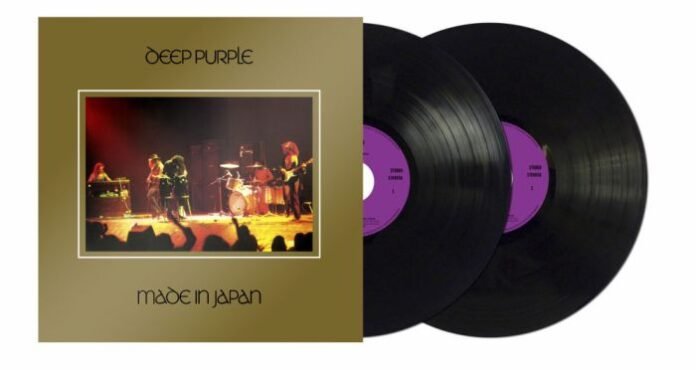
Genre: Hard Rock, Screaming Guitars and Smoke Machines That Should’ve Been Arrested
Why It Matters: It’s the sound of a band so tight and loud they could make tectonic plates shift.
Context: Recorded over three nights in Japan, this wasn’t just a contractual obligation – it was Deep Purple at their roaring, proggy best. Guitarist Ritchie Blackmore shreds like he’s being chased by demons, while Ian Gillan wails like an operatic banshee trying to exorcise a Marshall stack.
Highlights: “Child in Time” becomes a ten-minute cry for help with distortion pedals. “Smoke on the Water” – yes, that riff – sounds like it could level buildings.
Why You Should Listen: Because it’s less a concert and more an earthquake with a drummer. If your speakers survive it, you’ll never need caffeine again.
47. Live at Budokan – Cheap Trick (1978)
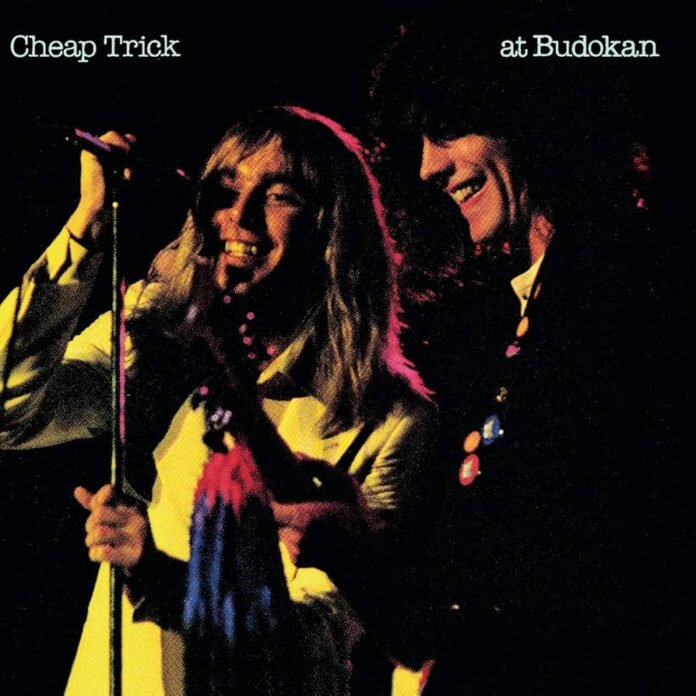
Genre: Power Pop with Stadium-Size Screaming
Why It Matters: It made Cheap Trick massive in Japan – and then in America because Japan said so.
Context: Recorded in Tokyo, the album captures the band soaking in Beatlemania-level hysteria, except instead of mop-tops, they’ve got mullets and leather.
Highlights: “I Want You to Want Me” becomes a ridiculously catchy anthem of needy lust. “Surrender” is teenage rebellion turned into glorious, singalong chaos.
Why You Should Listen: Because it’s one of the few times a live album turned a band into superstars – and it’s the perfect soundtrack for breaking curfew with a grin.
46. If You Want Blood You’ve Got It – AC/DC (1978)
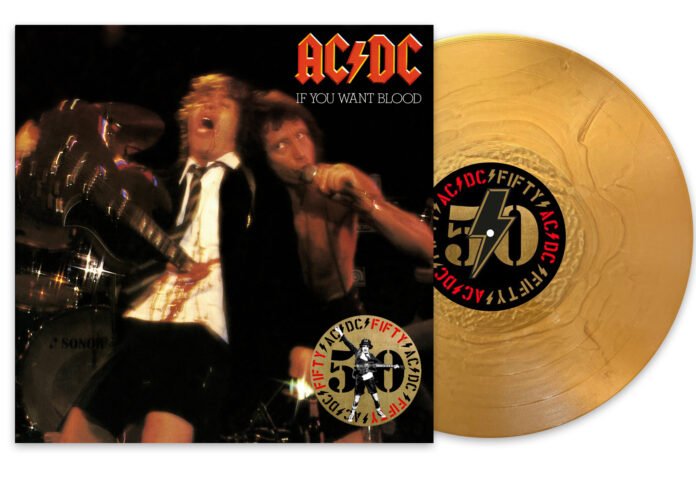
Genre: Aussie Pub Rock, Testosterone and Lightning in a Bottle
Why It Matters: It’s rock and roll boiled down to its sweatiest, loudest, most deranged essence.
Context: Recorded in Glasgow just before Bon Scott would exit this world via misadventure and alcohol, this is AC/DC doing what they do best – kicking you in the head with three chords and a smirk. No frills. No message. Just sheer volume and mayhem.
Highlights: “High Voltage” and “Whole Lotta Rosie” sound like they’re powered by a pint of motor oil and a punch in the throat. Bon Scott is equal parts menace and cheek.
Why You Should Listen: Because subtlety is for cowards. And because this album could probably resuscitate a dead battery from 30 feet.
45. Live at Massey Hall – Neil Young (1971)
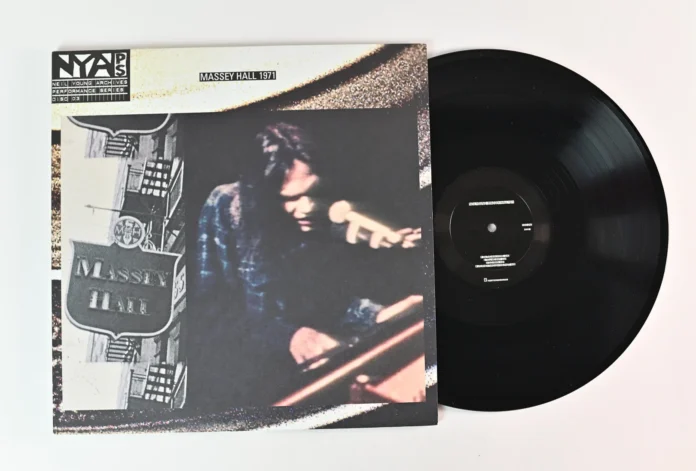
Genre: Acoustic Melancholy with Bonus Mumbles
Why It Matters: This is Neil Young, solo, vulnerable and basically inventing the “sad indie boy” template 30 years early.
Context: Recorded in Toronto before Harvest even dropped, Young runs through soon-to-be classics with minimal fuss and maximum heartbreak. Just him, a guitar, a piano and an uncomfortable amount of emotional exposure.
Highlights: “Old Man” and “The Needle and the Damage Done” are crushingly intimate. “Helpless” might make your soul leak.
Why You Should Listen: Because sometimes stripping everything away reveals the purest form of genius – fragile, uncomfortable and utterly human.
44. Under Great White Northern Lights – The White Stripes (2010)
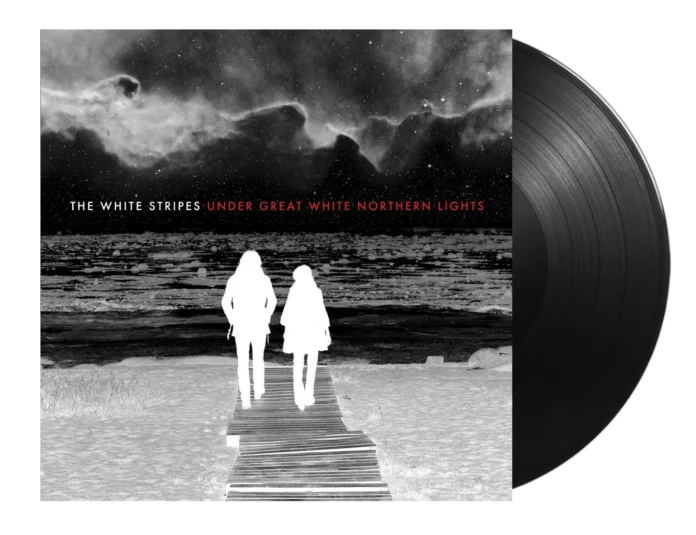
Genre: Garage Rock, Blues-Punk, Maximalist Minimalism
Why It Matters: Because it proves two people can make more glorious racket than an entire stadium-filling band – while dressed like candy canes.
Context: Recorded during the White Stripes’ final tour across Canada, this live album is both a celebration and a farewell. Jack and Meg White stomp through city after freezing city, giving every song the urgency of a jailbreak. No frills. No gimmicks. Just primal noise and deadpan silence in between.
Highlights: “Ball and Biscuit” growls like a beast let off its leash, while “Seven Nation Army” becomes a full-on crowd chant ritual. “Death Letter” turns blues revival into a spiritual exorcism, performed by a man who may or may not be possessed by Robert Johnson’s ghost.
Why You Should Listen: Because it’s a final document of a band that operated like a musical knife fight – sharp, messy and over before you even realise you’re bleeding. Jack shreds. Meg stares. And you, dear listener, get to witness the implosion.
43. Live at Wembley Stadium – Queen (1986)
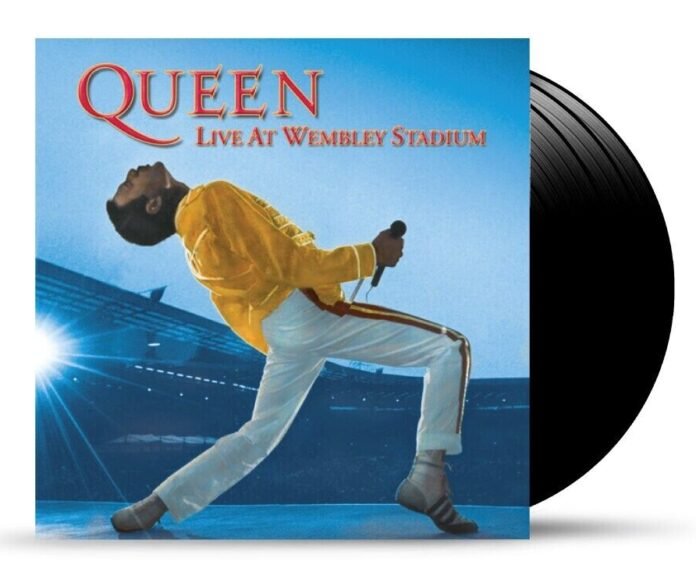
Genre: Stadium Rock, Bombast, Camp Majesty
Why It Matters: Because this is Freddie Mercury at the height of his powers, commanding 72,000 people like a mustachioed Roman emperor with better vocal range.
Context: Recorded over two nights at Wembley during their Magic Tour, this was Queen’s victory lap. It came hot on the heels of their legendary Live Aid performance and shows a band firing on all cylinders – larger-than-life, gloriously over-the-top and tighter than spandex on Brian May’s thighs.
Highlights: “Radio Ga Ga” becomes an Olympic-level clap-along. “Bohemian Rhapsody” is seamlessly spliced with “Killer Queen” and “Hammer to Fall” in a way that shouldn’t work but does. And the a cappella call-and-response with the audience? Pure arena sorcery.
Why You Should Listen: Because it’s Queen doing what Queen did best – turning stadiums into temples of bombastic joy. It’s not subtle, it’s not cool, but it is ridiculously entertaining. Also: no one, no one, works a crowd like Freddie.
42. Frampton Comes Alive! – Peter Frampton (1976)
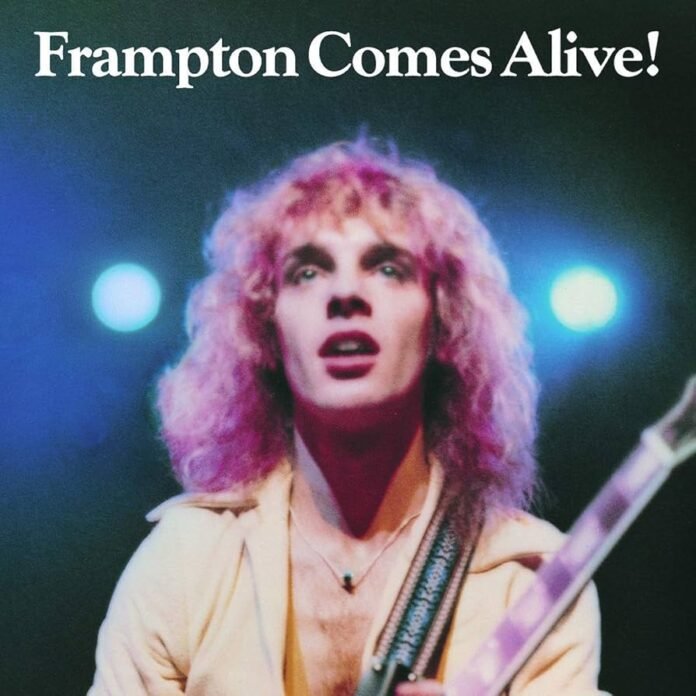
Genre: Classic Rock, Guitar Porn, Talkbox Wizardry
Why It Matters: Because this is the live album that accidentally turned Peter Frampton from a journeyman guitarist into a teen heartthrob – all thanks to a talkbox, a shag haircut and a crowd that sounds like it’s about to faint every five minutes.
Context: Before this double live album detonated in ’76, Frampton was just another ex-Humble Pie guitarist with decent chops and lukewarm record sales. Then he stepped onstage, someone hit ‘record’ and suddenly Frampton Comes Alive! was everywhere – blaring out of car stereos, in record shops, on your Dad’s hi-fi. It didn’t just sell albums. It became a lifestyle.
Highlights: “Show Me the Way” and “Baby, I Love Your Way” drip with singalong sentimentality, but it’s “Do You Feel Like We Do” – all 14 minutes of it – that really nails it: an extended jam that features Frampton talking through his guitar like he’s possessed by a chatty poltergeist.
Why You Should Listen: Because sometimes, lightning strikes in the least expected places – like the moment a crowd collectively loses its mind over a solo involving a glorified voice tube. It’s feel-good, impossibly catchy and completely of its time. If you don’t feel at least 12% more alive after listening, you might be dead inside.
41. The Concert in Central Park – Simon & Garfunkel (1982)
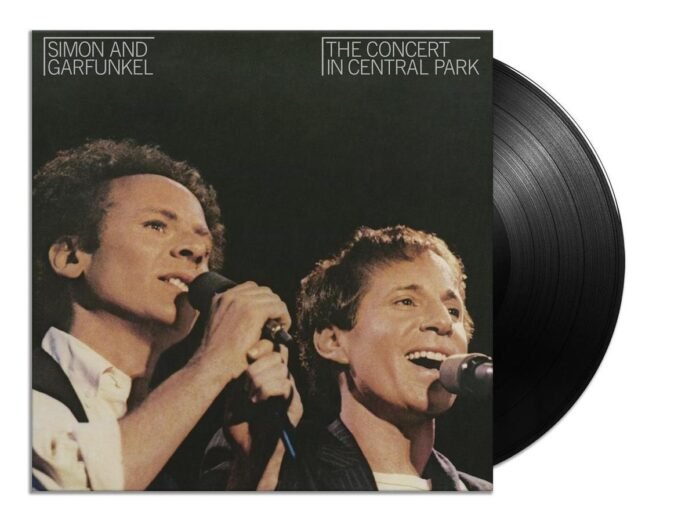
Genre: Folk Rock, Nostalgic Weeping, Harmonies Sent From Heaven
Why It Matters: Because two blokes with a guitar and decades of unresolved tension somehow managed to reunite in front of half a million people and sound like nothing had changed – even though everything had.
Context: After years of not speaking to each other unless absolutely contractually obligated, Paul Simon and Art Garfunkel emerged from the smouldering ruins of their friendship for one glorious evening in Central Park. It was 1981, they hadn’t played together properly in over a decade, and yet somehow, the magic returned. Or at least enough of it to convince the crowd they weren’t about to throttle each other mid-“Scarborough Fair.”
Highlights: “The Sound of Silence” opens like a hymn to 60s disillusionment, “Bridge Over Troubled Water” is spine-tingling, and Paul’s solo detour through “Still Crazy After All These Years” is a poignant reminder that he really didn’t need Art but brought him along for the nostalgia anyway.
Why You Should Listen: Because it’s not just a concert – it’s a time capsule of fragile reconciliation, iconic songwriting and a crowd big enough to start its own small nation. If melancholy and harmony had a baby, this would be it. Plus, it makes a strong case for the idea that folk duos should occasionally break up just to make their reunion sound this good.
40. Live Evil – Miles Davis (1971)
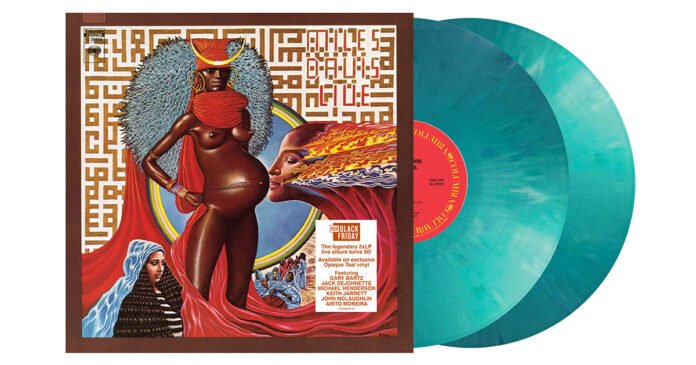
Genre: Jazz Fusion, Cosmic Noise, Beautiful Confusion
Why It Matters: Because this is what happens when jazz punches rock in the face and steals its drugs.
Context: Miles was deep in his electric period – high on inspiration and probably several other substances. Live-Evil is a stitched-together Frankenstein of live performances and studio overdubs, blurring the lines between what was played and what was summoned.
Highlights: “Sivad” and “What I Say” are exercises in controlled chaos. Miles doesn’t so much play his trumpet as weaponise it. The band – featuring titans like John McLaughlin and Keith Jarrett – are just trying to keep up without spontaneously combusting.
Why You Should Listen: Because jazz should occasionally sound like the world ending in surround sound. And this? This is the end in high fidelity.
39. Live Rust – Neil Young & Crazy Horse (1979)
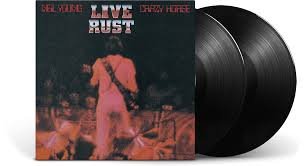
Genre: Folk, Grunge Prototype, Angry Canadian Energy
Why It Matters: It’s Neil Young in full shapeshifter mode – whispering ballads one minute, blowing out amps the next.
Context: Pieced together from Young’s ‘Rust Never Sleeps’ tour, this album flickers between acoustic tenderness and full-on electric rage, usually without warning. One moment you’re lulled into a false sense of security by “Sugar Mountain,” and the next “Hey Hey, My My” is melting your eyebrows off.
Highlights: “Powderfinger” hits like a short story wrapped in napalm. “Cortez the Killer” is sprawling, mystical and probably illegal in at least four countries.
Why You Should Listen: Because it’s the closest thing you’ll get to hearing someone argue with a distortion pedal and win. Beautiful and brutal in equal measure.
38. Three Sides Live – Genesis (1982)
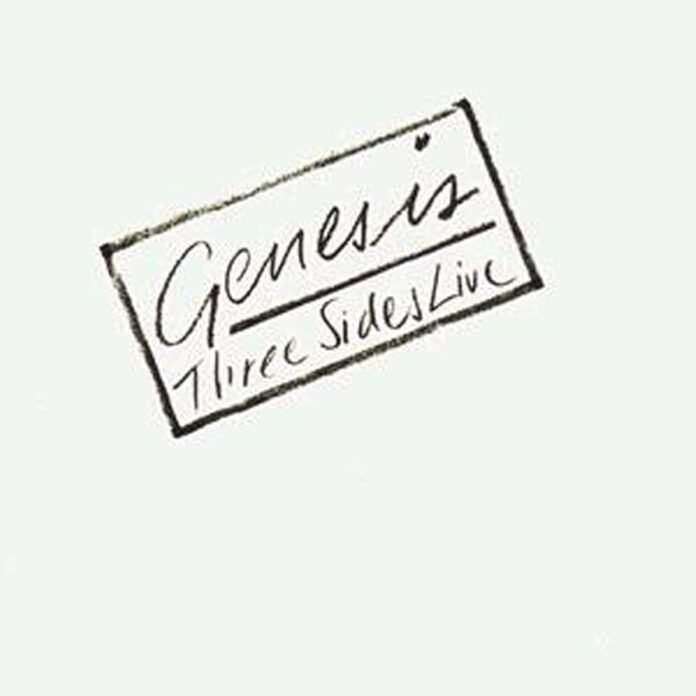
Genre: Prog Rock (with a whiff of pop creeping in), Time Signature Gymnastics, Drama Department Rock
Why It Matters: Because this was Genesis at the crossroads – half a foot in their indulgent, noodly past and half firmly planted in the radio-friendly world of 80s pop domination. Somehow, it works.
Context: Three Sides Live does what it says on the tin. It’s mostly live, mostly brilliant and yes – only three sides are live because the original US release had a fourth side of studio tracks. But those three live sides are pure theatre. Phil Collins, now fronting the band full time, is equal parts rock vocalist, stand-up comic and deranged camp counsellor. The result is surprisingly electrifying.
Highlights: “Turn It On Again” pulses with energy, “Dodo/Lurker” is absurdly brilliant and the older prog material like “The Lamb Lies Down on Broadway” is delivered with a clarity that was sometimes lacking in the studio versions. The band sounds tight, playful and weirdly aggressive.
Why You Should Listen: Because Genesis were never cooler than when they weren’t trying to be. This is a band letting their hair down (metaphorically – most of them were balding by now) and giving prog rock a beating heart. Even if you think you hate Genesis, Three Sides Live might surprise you. It’s theatrical without being bloated, playful without being silly. A rare prog-pop balancing act.
37. Sinatra at the Sands – Frank Sinatra (1966)
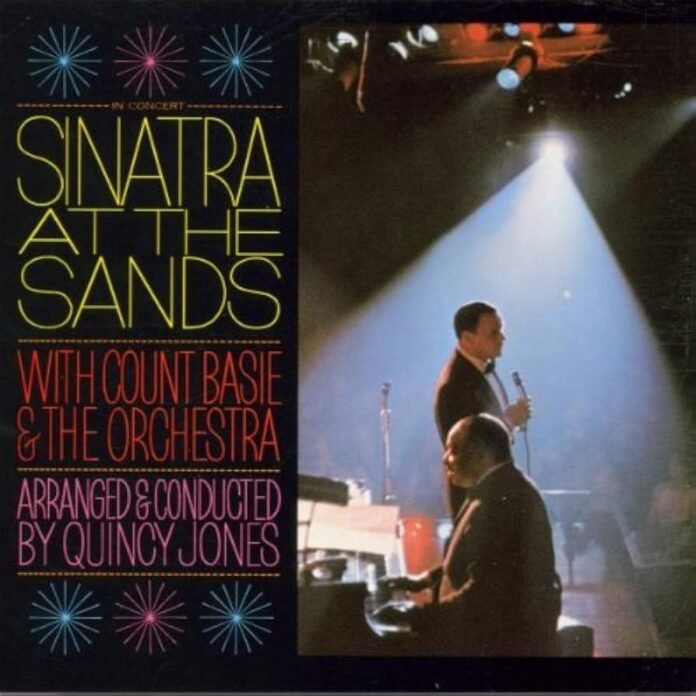
Genre: Swing, Lounge, Big Band Swagger
Why It Matters: Because this is the sound of cool being poured straight into your ears over a bed of brass and bourbon. Sinatra, in his prime, backed by Count Basie’s orchestra and conducted by Quincy bloody Jones – it’s practically cheating.
Context: Recorded at the Sands Hotel and Casino in Las Vegas – back when Vegas was a smoky playground for mobsters and crooners, not a neon wasteland of slot machines and broken dreams – this album catches Sinatra in full command. He jokes, he swears, he sings like the room owes him money.
Highlights: “Come Fly With Me” has never sounded this airborne. “One for My Baby (and One More for the Road)” is so smooth it could talk its way out of a parking ticket. And the mid-set banter? Peak Rat Pack nonsense.
Why You Should Listen: Because it’s more than a live album – it’s a time machine to a lost era when entertainers actually entertained. Sinatra doesn’t just sing; he performs, preens, and owns every inch of that stage like the velvet-voiced godfather of swagger he was.
36. It’s Alive – Ramones (1979)
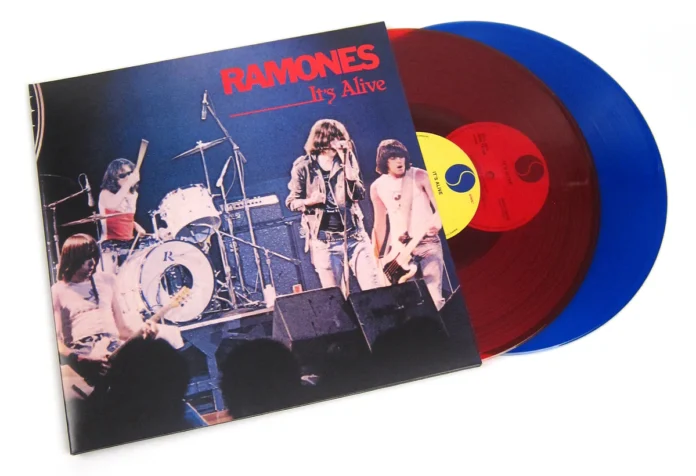
Genre: Punk Rock, Buzzsaw Pop, Leather-Clad Bedlam
Why It Matters: Because it’s the Ramones in full throttle, rattling through 28 songs in under an hour like someone was chasing them with a taser. It’s punk distilled into its purest, sweatiest, most frantic form.
Context: Recorded on New Year’s Eve 1977 at the Rainbow Theatre in London, this is the Ramones right before punk became a commodity – fast, filthy and gloriously unpolished. No banter, no encores, just a blitzkrieg of blistering tracks delivered with such precision you’d swear they’d rehearsed. (They hadn’t.)
Highlights: “Blitzkrieg Bop” opens the set like a middle finger dipped in glitter. “Sheena Is a Punk Rocker” and “Teenage Lobotomy” are feral. And the pace never lets up – they hit the gas at the start and forget where the brakes are.
Why You Should Listen: Because it’s the punk live album – rawer than a steak tartare in a dive bar and faster than your attention span. If you want a document of what punk actually sounded like before Hot Topic and emo fringe haircuts ruined everything, this is it.
35. Live at the BBC – The Beatles (1994)
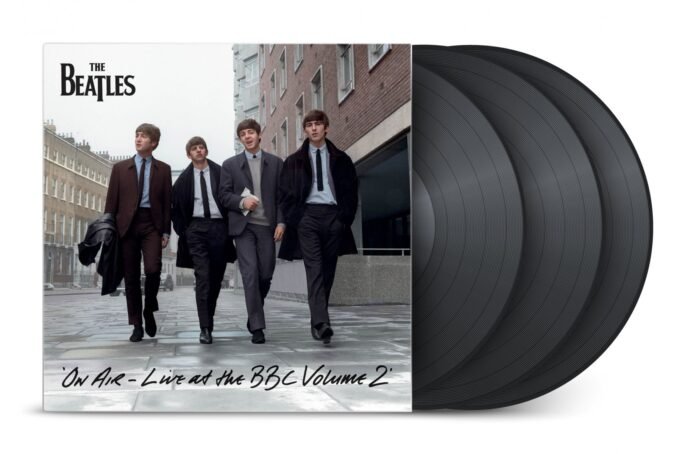
Genre: Early Rock & Roll, Merseybeat, Scouse Banter
Why It Matters: Because it’s The Beatles before they became The Beatles™ – raw, cheeky and still trying to impress the BBC producers enough to not get replaced by The Shadows.
Context: These recordings, pulled from various BBC radio sessions between 1963 and 1965, offer a peek into the band’s tight, energetic live style before they were buried under layers of studio tape and fan hysteria. It’s not one show but a cobbled mosaic of pre-mania brilliance.
Highlights: A blistering “Roll Over Beethoven,” a charmingly loose “I Got a Woman,” and Lennon being an absolute sarcastic menace in the inter-song banter. It’s like being stuck in a lift with the Fab Four, only in a good way.
Why You Should Listen: Because this is The Beatles with their guards down – all jangle and charm, no sitars or self-importance. If you’ve only ever heard the pristine polish of Abbey Road, this is like finding out James Bond used to bartend in Liverpool.
34. The Long Goodbye: LCD Soundsystem Live at Madison Square Garden (2014)
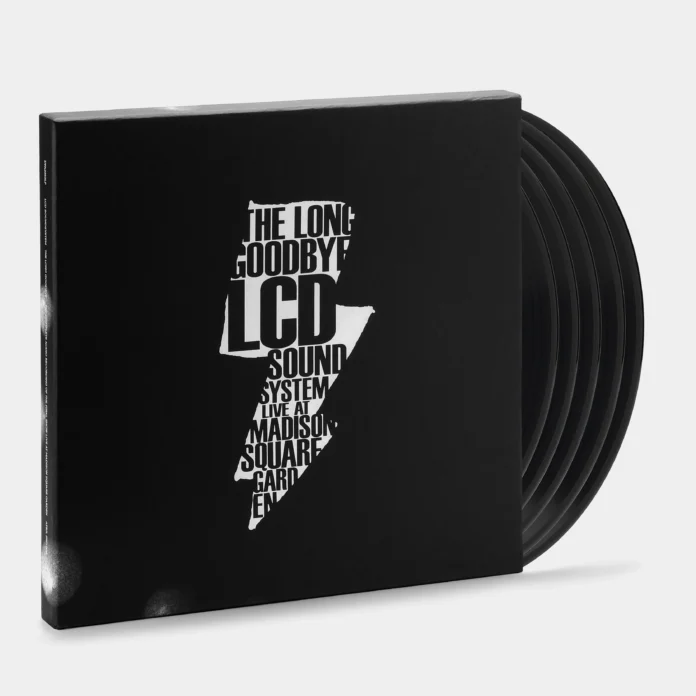
Genre: Dance-Punk, Indie Rock, Millennial Disco Melancholy
Why It Matters: Because it’s not just a farewell show – it’s a eulogy for an era, a middle finger to overproduced EDM, and a love letter to the idea that you can make people dance and cry simultaneously.
Context: LCD Soundsystem announced they were calling it quits and like any band with a flair for the dramatic, they did so with a marathon 3.5-hour performance at Madison Square Garden. The crowd was weeping into their ironic T-shirts. James Murphy looked like he might combust emotionally. And it all got recorded in pristine, gut-punching clarity.
Highlights: “All My Friends” is an existential crisis disguised as a dance anthem. “Someone Great” feels like therapy with a synth line. And “Yeah” turns into a 20-minute techno exorcism that leaves everyone euphoric, exhausted and oddly reflective.
Why You Should Listen: Because it captures the end of a band at their peak – vulnerable, bombastic and drenched in disco sweat. It’s also one of the rare live albums where the audience is just as important as the band. You’ll feel like you were there. You’ll wish you were.
33. The Dance – Fleetwood Mac (1997)
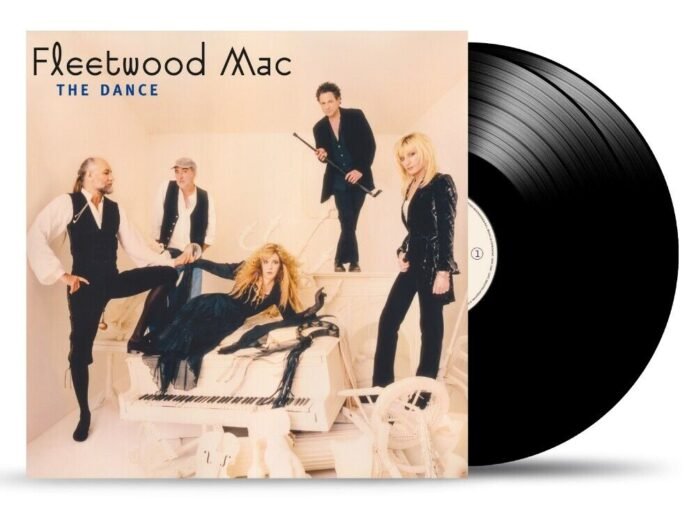
Genre: Soft Rock, Emotional Baggage Rock, Adult Contemporary With Bite
Why It Matters: Because it’s the sound of a band riddled with emotional scars, decades of unresolved sexual tension, and far too many royalties to ignore – and somehow, it still sounds immaculate.
Context: Fleetwood Mac reunited in 1997 after years of solo careers, internal lawsuits and the sort of interpersonal chaos that makes Game of Thrones look like The Great British Bake Off. The Dance was both a TV special and a full-blown resurrection – complete with Stevie Nicks swirling like a goth enchantress and Lindsey Buckingham playing guitar like he’s avenging something deeply personal.
Highlights: “The Chain” is as thunderous and vengeful as ever. “Landslide” might just ruin you emotionally. And new track “Silver Springs” — cut from Rumours 20 years prior becomes a live exorcism, with Nicks basically singing Buckingham into the seventh circle of romantic regret.
Why You Should Listen: Because it proves that some bands sound best when they’re barely holding it together. The tension is audible. The harmonies are pristine. And Stevie Nicks might actually be casting spells in real time.
32. 1969: The Velvet Underground Live – The Velvet Underground (1974)
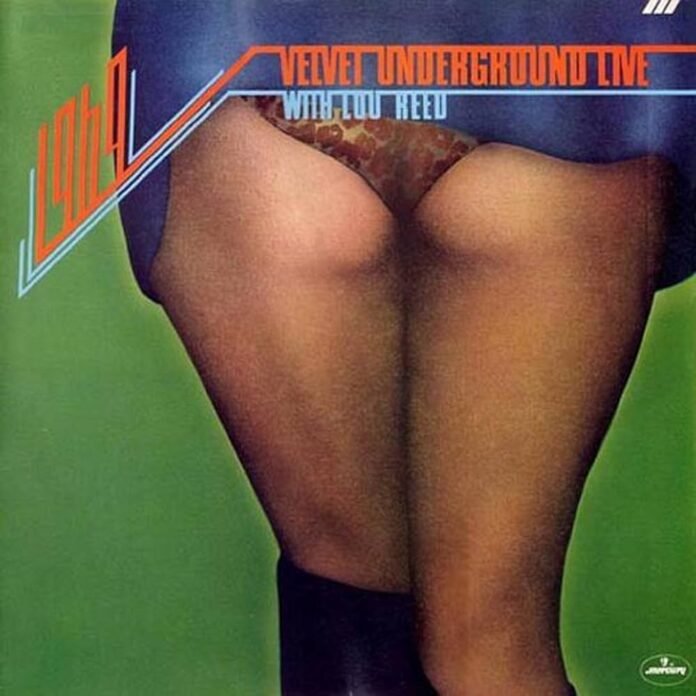
Genre: Proto-punk, Art Rock, Experimental Murk
Why It Matters: Because it’s the Velvets in their element – not snarling through feedback in some SoHo art loft, but playing unexpectedly tight, hypnotic grooves in Texan dives to audiences who probably thought Lou Reed was the janitor.
Context: Released in 1974 but recorded in 1969 (when the band still had Doug Yule but had shed the ever-unpredictable John Cale), this set showcases the Velvets in transition – less chaotic than their Andy Warhol days, but no less compelling. If their studio albums are cult texts, this is the half-remembered sermon.
Highlights: A sprawling, trance-inducing “What Goes On” clocks in at over eight minutes and is somehow too short. “Sweet Jane” arrives before the famous Loaded polish, raw and twitchy. And “Lisa Says” proves that Lou Reed could write heartbreak disguised as nonchalance.
Why You Should Listen: Because it captures one of the most influential bands in history not imploding for once. Instead, they’re locked in, strange and magnetic – turning minimalism into theatre and repetition into ritual. It’s the sound of a cult forming, live and in real time.
31. BBC Sessions – Led Zeppelin (1997)
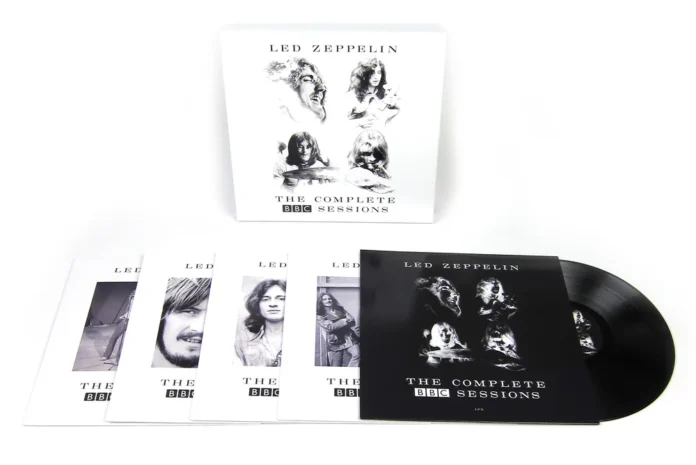
Genre: Proto-Metal, Occult Blues and Mismatched Pants
Why It Matters: It captures Zeppelin in their early, scrappy glory before they became Viking gods of ego and excess.
Context: Recorded between 1969–1971 for British radio, these sessions show a band still figuring it out – and already crushing it. Page’s guitar? Filthy. Bonham’s drums? Earth-shaking. Plant? Still yelping like a horny banshee.
Highlights: “Communication Breakdown” sounds like a bar fight in sonic form. “Dazed and Confused” lives up to its name – in the best way.
Why You Should Listen: Because it’s Zeppelin before they went full Valhalla. No orchestras, no 30-minute solos – just raw, thunderous brilliance.
30. Live at the Regal – B.B. King (1965)
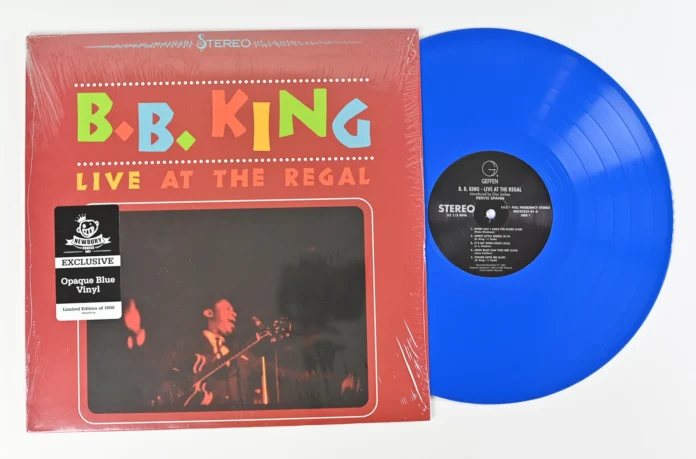
Genre: Electric Blues Royalty
Why It Matters: This is B.B. King in his imperial phase – before blues became shorthand for ‘sad man with guitar in beer ad’.
Context: Recorded at the Regal Theater in Chicago, this is the textbook definition of “how to own a room.” King’s tone is as smooth as his patter and Lucille (his guitar, not a person) sings like she’s got secrets.
Highlights: “Every Day I Have the Blues” and “How Blue Can You Get?” are both masterclasses in groove and restraint. King controls the crowd with the ease of a man who knows exactly what they came for.
Why You Should Listen: Because this is blues before it was commodified – sweaty, stylish and utterly in charge.
29. Live 1975–85 – Bruce Springsteen & The E Street Band (1986)
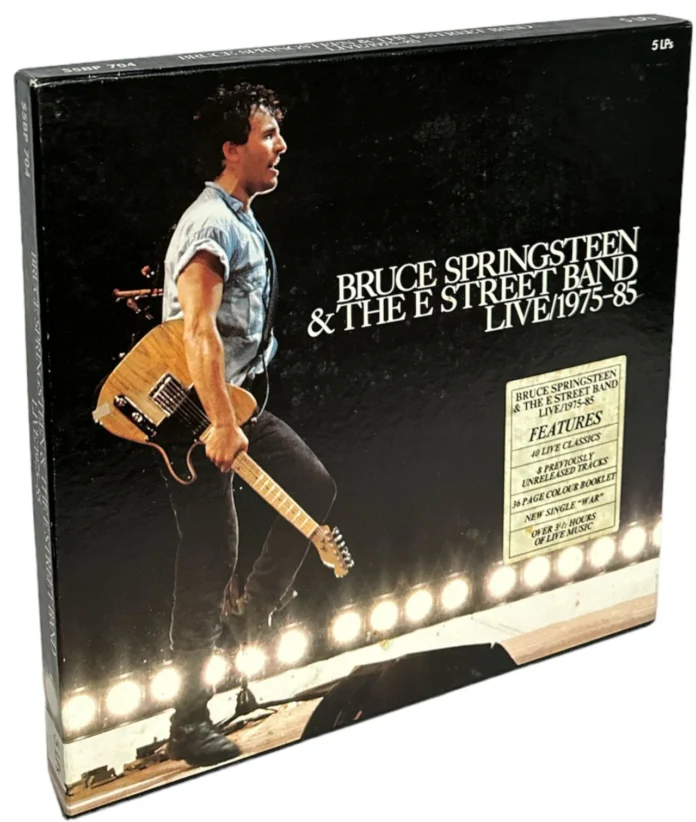
Genre: Heartland Rock, Working-Class Catharsis, Denim and Destiny
Why It Matters: Because it’s a sprawling, sweaty love letter to the road, to the fans and to the power of a marathon gig to make you believe in something again – even if it’s just the healing power of saxophone solos.
Context: Clocking in at five LPs and covering over a decade of gigs, Live 1975–85 is less an album and more a manifesto. Springsteen isn’t just singing songs – he’s giving sermons, telling tales, breaking hearts and patching them back together with guitar riffs and shout-along choruses. It’s the kind of live collection that makes you want to quit your job, buy a second-hand Chevy and drive toward the sunset with no destination but glory.
Highlights: The haunting acoustic version of “Born to Run” sounds like Springsteen’s reading it aloud to a ghost. “Thunder Road” becomes a full-band victory lap. And “The River”? Still one of the saddest songs ever written about the slow death of hope – delivered with enough pathos to sink a battleship.
Why You Should Listen: Because it’s proof that The Boss doesn’t just perform live – he lives live. Each track feels like a life-or-death struggle to connect and by the time the final cheers fade out, you’ll feel like you’ve been baptised in sweat and sincerity. Bring a towel.
28. Rock of Ages – The Band (1972)
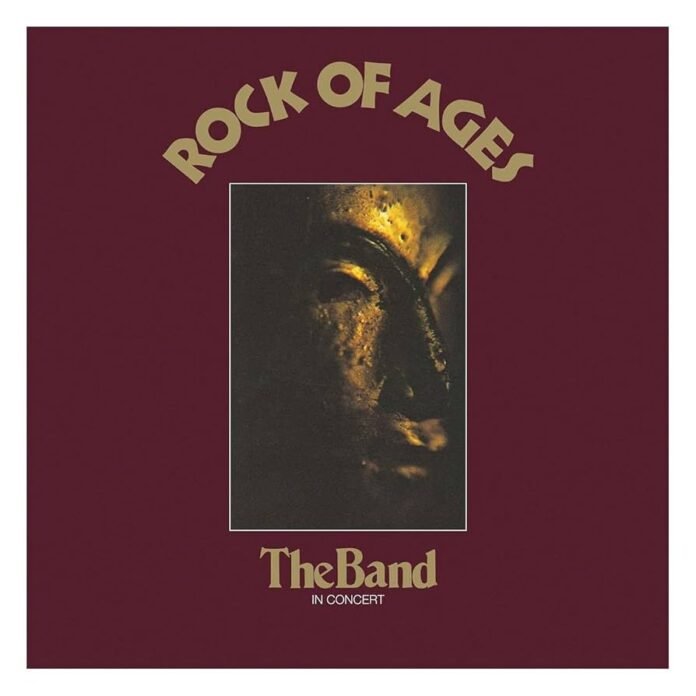
Genre: Roots Rock, Horn Sections and Vague Sadness
Why It Matters: It’s The Band at their peak – before egos, drugs and bad perms set in.
Context: Recorded over four nights in New York, this live album features tight musicianship, soaring horns arranged by Allen Toussaint and a group chemistry that still felt like they didn’t want to stab each other.
Highlights: “The Night They Drove Old Dixie Down” hits like a history lesson set to harmonies. Dylan even shows up for a cameo, probably out of boredom or debt.
Why You Should Listen: Because it’s one of the few albums that makes nostalgia feel like a political act.
27. Alive! – Kiss (1975)
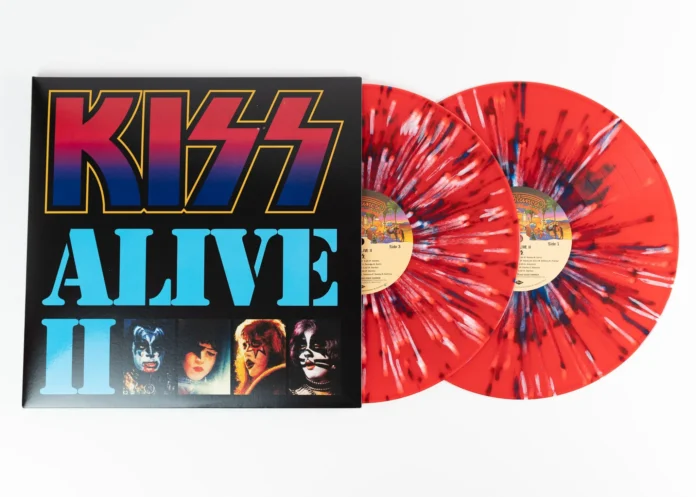
Genre: Glam Rock with fire, blood and leather codpieces
Why It Matters: It turned Kiss from a floundering band in clown makeup into a fire-breathing rock juggernaut.
Context: Prior to Alive!, Kiss were known more for looking like a Marvel cosplay troupe than selling actual records. This live album changed that – allegedly with a bit of studio magic – but who cares when it sounds this electric?
Highlights: “Rock and Roll All Nite” becomes a call to arms for drunk relatives everywhere. “Deuce” and “Strutter” throb with the sort of swagger you can’t buy at a record store – unless the record store is on fire and staffed by demons.
Why You Should Listen: Because it’s what happens when a band realises that subtlety is for cowards and volume solves everything.
26. Unplugged – Jay-Z (2001)
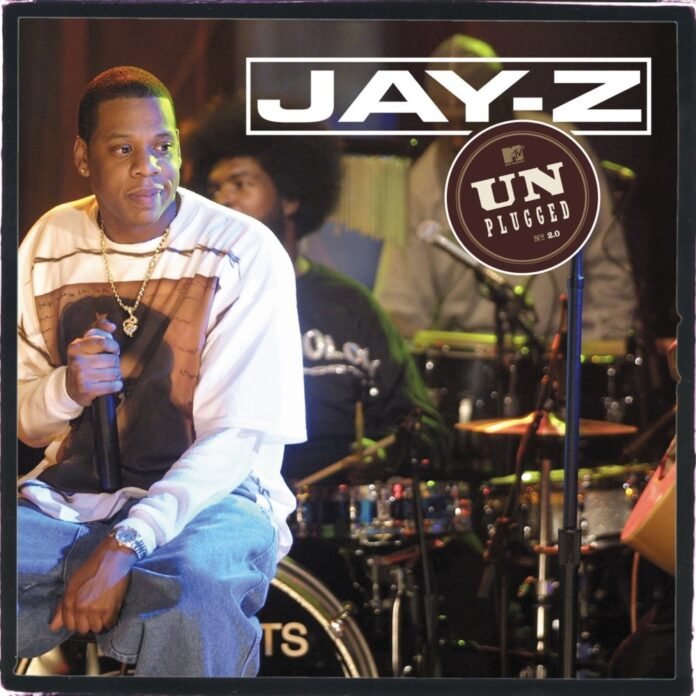
Genre: Hip-Hop, MTV Unplugged, Rap Meets The Roots
Why It Matters: Because it proved hip-hop could thrive in a live setting without just shouting over a backing track – and Jay-Z did it with one of the greatest live bands on Earth.
Context: In 2001, MTV’s Unplugged series decided to get jiggy with it – and Jay-Z, fresh off The Blueprint, brought in The Roots to back him. The result? A seamless fusion of boom-bap bars and jazzy live instrumentation that made MTV execs briefly consider they might have taste.
Highlights: “Izzo (H.O.V.A.)” sounds like it was born to be played by a funk band. “Takeover” hits even harder with real drums. And the appearance of a pre-fame Beyoncé on “’03 Bonnie & Clyde” feels like a prophecy being written in real time.
Why You Should Listen: Because it’s a rare glimpse of a rap icon adapting his flow to fit an actual band, with ?uestlove holding it down like a metronome with a PhD. Also, it’s from a time when MTV still knew what music was.
25. Kick Out the Jams – MC5 (1969)
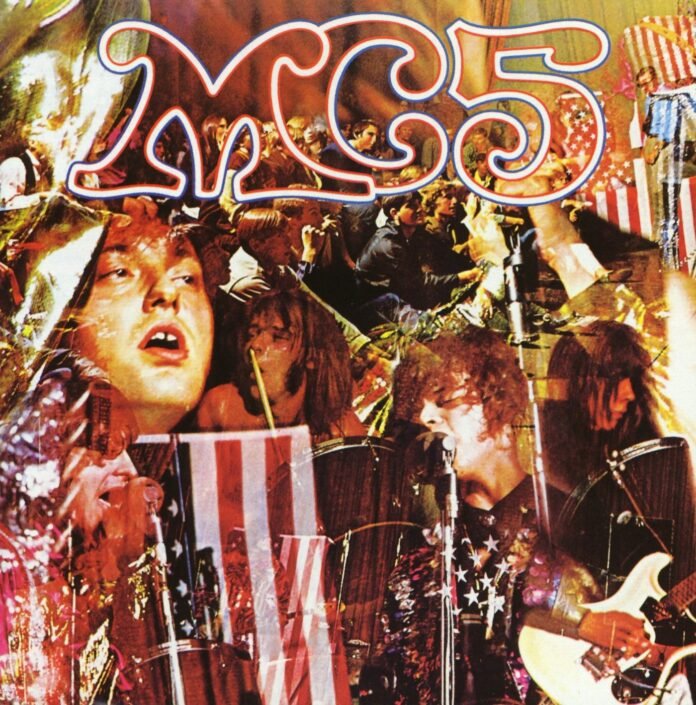
Genre: Proto-punk, Revolutionary Screaming, Audio Molotov Cocktails
Why It Matters: Because subtlety is for cowards and MC5 came to start riots – not debates.
Context: Recorded at Detroit’s Grande Ballroom, this album is the sound of a band duct-taping dynamite to rock ‘n’ roll and yelling “fire in the hole!” It opens with the now-iconic cry: “Kick out the jams, motherf***ers!” – which, unsurprisingly, caused record execs to burst a collective artery.
Highlights: “Ramblin’ Rose” and “Rocket Reducer No. 62” are gloriously unhinged, like Little Richard after six espressos and a political awakening. The entire band sounds like they’ve mistaken their instruments for blunt weapons.
Why You Should Listen: Because this is what punk sounded like before punk knew it existed. It’s messy, furious and gloriously unfiltered – like a protest march accidentally set to music.
24. Live at Carnegie Hall – Bill Withers (1973)
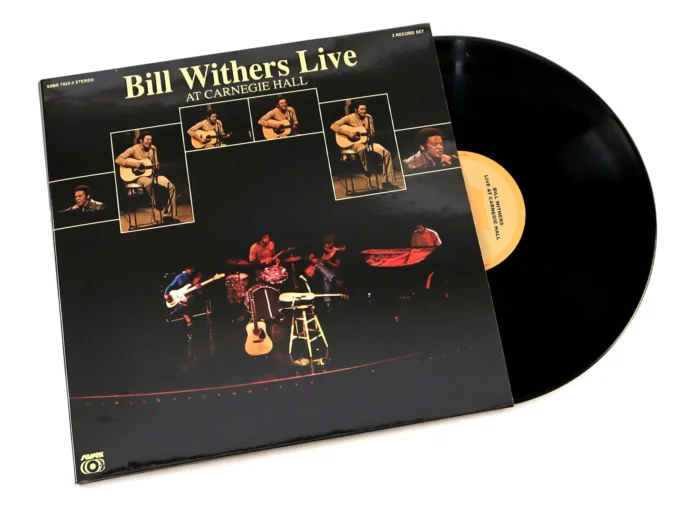
Genre: Soul with awkward dad energy
Why It Matters: It’s proof you don’t need pyrotechnics to blow the roof off a venue – just heart, humour and a voice like warm caramel.
Context: Recorded at the legendary Carnegie Hall, this is Bill Withers in peak form, cracking jokes and breaking hearts in equal measure. No backing dancers, no flashing lights – just stories and soul.
Highlights: “Ain’t No Sunshine” hurts in ways you didn’t think live music could. “Use Me” is so funky it might just get you pregnant. And his rambling intro to “Grandma’s Hands” will have you calling your nan in tears.
Why You Should Listen: Because when someone sings like this, you listen. And you shut the hell up while they do it.
23. At Fillmore East – The Allman Brothers Band (1971)
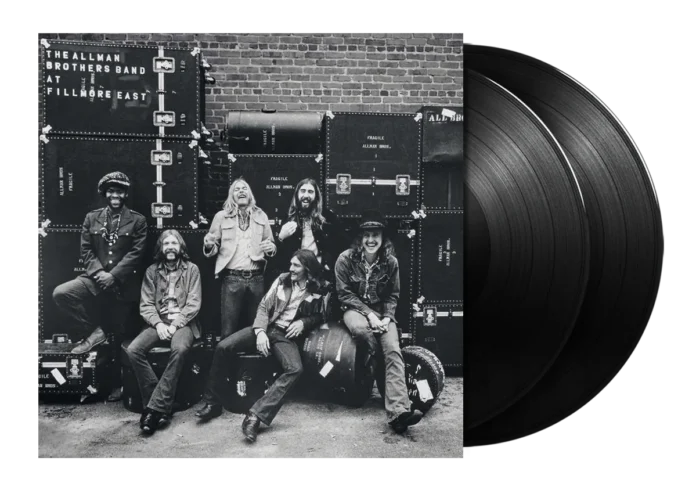
Genre: Southern Rock, Blues, Extended Guitar Flexing
Why It Matters: It’s the gold standard for guitar-based live albums. Duane Allman and Dickey Betts don’t play solos – they launch them into orbit.
Context: Recorded over two nights at Bill Graham’s Fillmore East in New York, the album’s a sweaty, blues-soaked epic. It’s also tragically poignant – Duane Allman would die in a motorcycle crash just months after its release.
Highlights: “Whipping Post” clocks in at a ridiculous 23 minutes and somehow never gets boring. “Statesboro Blues” opens with a slide guitar tone so perfect it might make other guitarists cry.
Why You Should Listen: Because this is what happens when virtuosity and volume find common ground – it’s thunderous, beautiful and probably made every roadie involved consider early retirement.
22. Live at the Harlem Square Club, 1963 – Sam Cooke (1985)
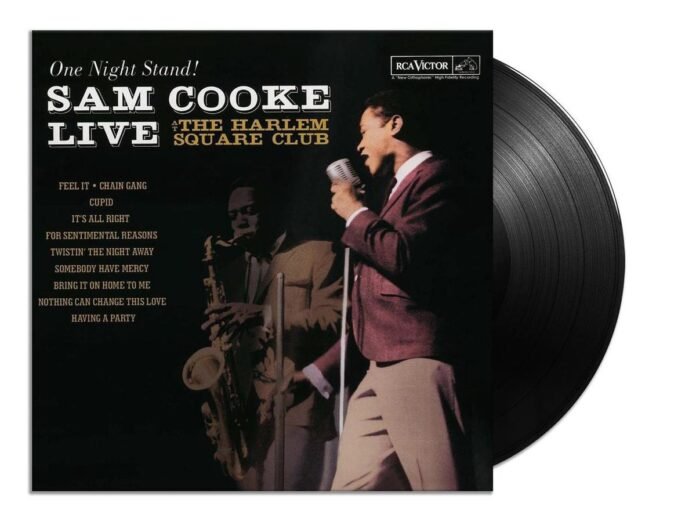
Genre: Soul, Sweat and Shouting Over Swooning
Why It Matters: It rewrote everything you thought you knew about Sam Cooke.
Context: When it was recorded, the label shelved it for being “too raw.” Translation: it was too Black, too loud and too alive for the prim-and-proper crooner image RCA had carefully built. It didn’t see the light of day until 1985, by which time it felt like a transmission from another planet.
Highlights: “Bring It On Home to Me” is electrifying, Cooke pushing his voice into raspy, gospel-tinged territory. “Twistin’ the Night Away” is a sweat-soaked joyride.
Why You Should Listen: Because you’ve never heard Sam Cooke like this – unfiltered, impassioned and singing like he’s trying to burn the club down with his lungs.
21. The Name of This Band Is Talking Heads – Talking Heads (1982)
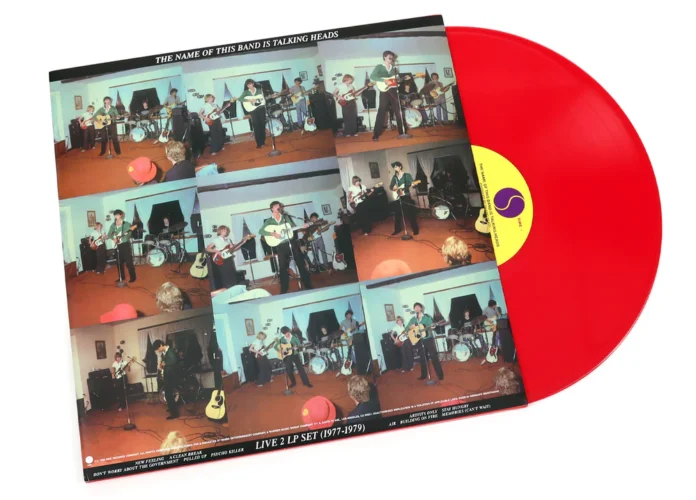
Genre: Art-Rock, Funk, Dance-Anxiety
Why It Matters: It shows the full metamorphosis of the band – from nerdy CBGB upstarts to rhythm-obsessed sonic architects.
Context: Unlike Stop Making Sense, this is a sprawling two-disc affair that spans from their early punkish days in 1977 to their full Afrobeat-powered lunacy in 1981. It’s jittery, frenetic and at times, sounds like it’s trying to escape its own speakers.
Highlights: Early versions of “Psycho Killer” and “Pulled Up” buzz with sweaty basement energy. Later tracks like “Houses in Motion” are slick, funky and feel like they could collapse under their own ambition at any moment.
Why You Should Listen: Because it’s like watching a band evolve in real time – from twitchy weirdos to gods of the groove. Also, the live version of “Drugs” will make you question if you’ve accidentally taken some.
20. Hell Freezes Over – Eagles (1994)
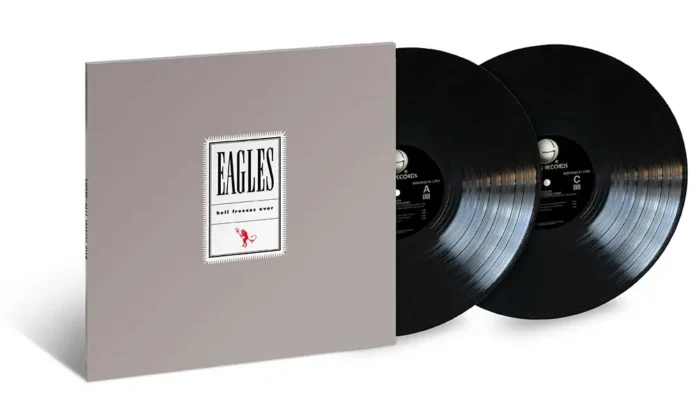
Genre: Soft Rock, Hotel Californication, Polished West Coast Reunionism
Why It Matters: Because it proved you could reunite a famously fractured band, slap on a title referencing their own breakup promise and still knock out a live album that’s smoother than a California Chardonnay.
Context: The Eagles hadn’t performed together since the early ’80s and Don Henley once claimed they’d only reunite “when hell freezes over.” Well, guess what? The underworld developed frostbite and in 1994, they returned with haircuts, harmonies and just enough bite to keep the nostalgia from curdling.
Highlights: The acoustic renditions are the real gems here – “Hotel California” gets an MTV Unplugged-style revamp, “Tequila Sunrise” is sweet and mournful and “New York Minute” is weirdly affecting. There are also four slick new studio tracks, including “Get Over It,” which sounds like Henley screaming at a therapy group.
Why You Should Listen: Because it’s a masterclass in controlled reunion energy – no pyrotechnics, no meltdown, just world-class musicianship and harmonies so tight you could floss with them. Bonus points if you’re a dad wearing driving moccasins.
19. Live in Europe – Otis Redding (1967)
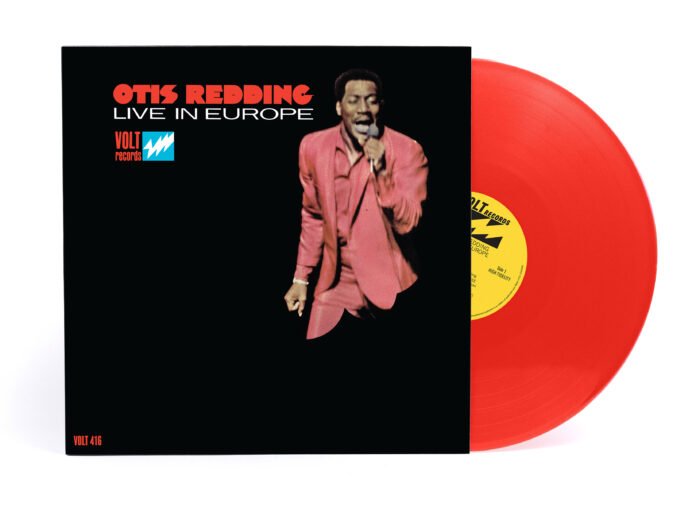
Genre: Soul, R&B, Howling Brilliance with Brass
Why It Matters: Because Otis Redding was a man who sang like every note was a matter of life or death – and here, mid-tour and mid-explosion, he absolutely detonates.
Context: Recorded during Redding’s first European tour in March 1967, this album captures the soul legend just months before his tragic death. Backed by Booker T. & the MG’s and the Mar-Keys horns, it’s a set brimming with sweat, showmanship and more raw passion than a Shakespearean monologue screamed through a megaphone.
Highlights: “Respect” becomes a full-body sermon, “Try a Little Tenderness” is a controlled implosion and even “Satisfaction” – yes, the Stones one – sounds like it was meant for Otis all along. His ad-libs alone could power a small city.
Why You Should Listen: Because it’s Otis Redding with something to prove and absolutely no interest in subtlety. He doesn’t just sing; he testifies, yells, pleads and roars his way through a set that turns polite European audiences into believers. It’s live soul at its most incendiary, with every track daring you not to feel something. Good luck with that.
18. Unplugged – Eric Clapton (1992)
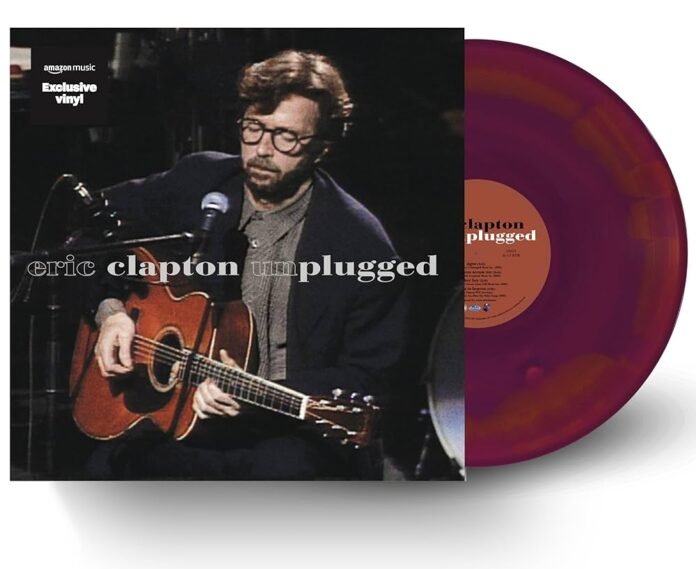
Genre: Acoustic Blues, Adult Contemporary, Dad Soul
Why It Matters: It’s the moment Clapton swapped the electric Strat for an acoustic and made cardigan-rock cool again. Somehow, against all odds, it worked.
Context: Recorded for MTV’s now-iconic Unplugged series, Clapton reinvented his sound for the living room crowd. Gone were the screaming solos and Marshall stacks. In came laid-back acoustic licks, intimate vibes and a beard that looked like it had seen things.
Highlights: “Tears in Heaven” – written in the wake of personal tragedy – is as quietly devastating as music gets. “Layla,” once a howling guitar anthem of obsessive love, is reimagined as a mournful shuffle and bizarrely, it might be even better for it.
Why You Should Listen: Because sometimes stripping everything back reveals what was always there – melody, emotion and a bloke who can play guitar better than 99.9% of the planet. It’s not edgy. It won’t scare your nan. But Unplugged is the sound of a legend reminding you why he’s earned that title.
17. Live Nassau Coliseum ’76 – David Bowie (2010/1976)

Genre: Glam Rock, Soul-Funk Detour, Thin White Duke Meltdown
Why It Matters: Because this is Bowie at his most dangerously brilliant – halfway through a coke-fuelled identity crisis, dressed like a fascist jazz magician and performing like his life depends on it (because frankly, it kind of did).
Context: Recorded on March 23, 1976, during the Station to Station tour – aka the Thin White Duke era, aka peak “I haven’t slept in a week” Bowie. The album wasn’t officially released until 2010, buried for decades like a time capsule of beautifully controlled chaos. The band is sharp, Bowie is possessed and every song feels like it’s teetering on the edge of collapse.
Highlights: The title track “Station to Station” unfolds like an art-rock exorcism, “Word on a Wing” reveals cracks in the armour and “Panic in Detroit” gets a menacing, funk-heavy rework. The cover of “Waiting for the Man” is equal parts tribute and abduction.
Why You Should Listen: Because it’s a rare document of Bowie’s most enigmatic period, capturing the surreal glamour and existential dread in equal measure. He’s not here to please you – he’s here to purge demons in front of a paying audience. And somehow, it’s glorious.
16. Amazing Grace – Aretha Franklin (1972)
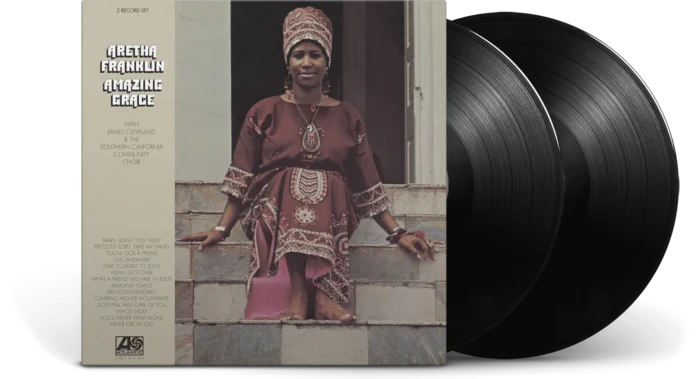
Genre: Gospel, Soul, Transcendental Power
Why It Matters: It’s not just a live album – it’s a religious experience. Even if you’re a lifelong atheist, Aretha will make you question your cynicism and possibly start humming hymns in public.
Context: Recorded over two nights at the New Temple Missionary Baptist Church in Los Angeles, Amazing Grace is Aretha Franklin at her spiritual and vocal peak. Backed by the Southern California Community Choir and under the direction of gospel titan James Cleveland, Aretha returned to her roots and turned a gospel service into a historic musical moment.
Highlights: “Precious Memories” aches with nostalgia, “Climbing Higher Mountains” feels like ascending through the clouds and the title track, “Amazing Grace,” could probably melt a glacier. It’s the sound of a woman being lifted and lifting everyone else with her.
Why You Should Listen: Because it’s Aretha, in a church, being utterly untouchable. It’s not just one of the best live albums – it’s one of the most honest and affecting pieces of recorded sound, full stop.
15. S&M – Metallica (1999)
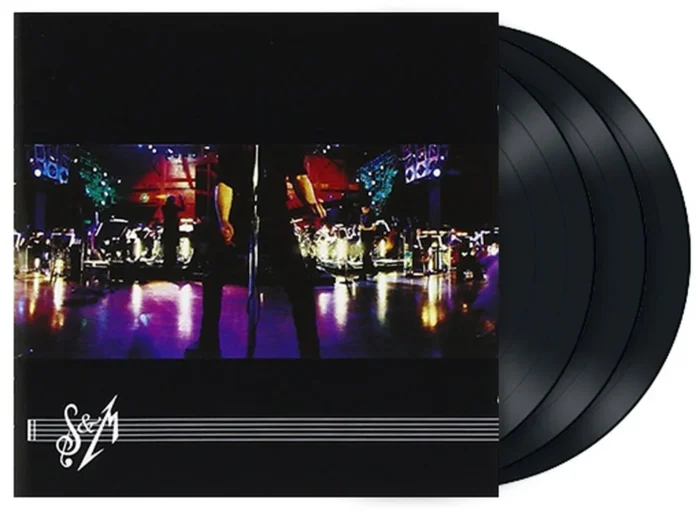
Genre: Metal, Orchestral Mayhem, Musical Testosterone
Why It Matters: Because nothing says subtlety like a thrash metal band backed by a full orchestra.
Context: Metallica, in a move that can only be described as either visionary or completely deranged (possibly both), teamed up with the San Francisco Symphony to turn their already thunderous catalogue into cinematic epics. The result? S&M – a live album that sounds like Wagner discovered distortion pedals.
Highlights: “For Whom the Bell Tolls” becomes an operatic death march. “The Call of Ktulu” is reborn as something you’d play before invading a planet. And “No Leaf Clover,” a brand-new track written for the event, is one of Metallica’s most surprisingly melodic moments – like being punched in the face with a velvet glove.
Why You Should Listen: Because it’s the only album where you can headbang and feel cultured at the same time. S&M is over-the-top, bombastic and utterly ludicrous – and that’s precisely why it works.
14. Miles of Aisles – Joni Mitchell (1974)
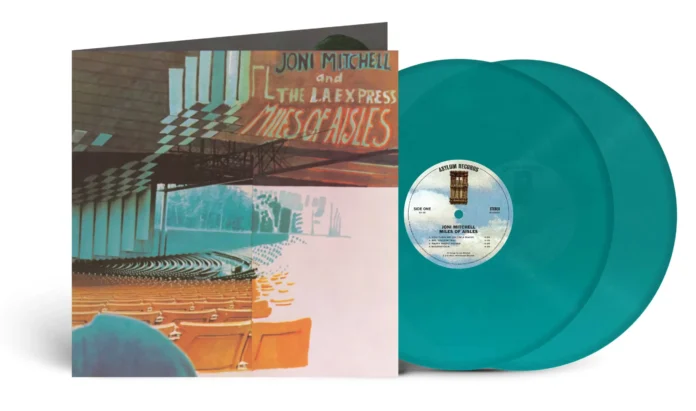
Genre: Folk, Jazz, Emotional Shrapnel
Why It Matters: Because live albums don’t always have to be sweaty blokes with guitars. Sometimes, they can be beautifully devastating.
Context: Joni Mitchell’s first live release came in the aftermath of her folk princess ascension and right before her jazz fusion phase. Backed by the LA Express, she blends the intimacy of confessional poetry with sprawling instrumentation. It’s like watching someone read their diary while a saxophone gently sobs in the background.
Highlights: “A Case of You” sounds even more like it was written while quietly weeping into a glass of merlot. “Carey” bounces with a new groove and “Woodstock” ditches the hippy campfire vibe in favour of something jazzier and oddly ominous. There’s also her cheeky stage banter – a reminder she’s not just a tragic songbird but one with bite.
Why You Should Listen: Because not all live albums need to be testosterone-fuelled spectacles. Miles of Aisles is delicate, elegant and emotionally flammable. It’s proof that devastation can be dished out gently – and still level a room.
13. How the West Was Won – Led Zeppelin (2003)
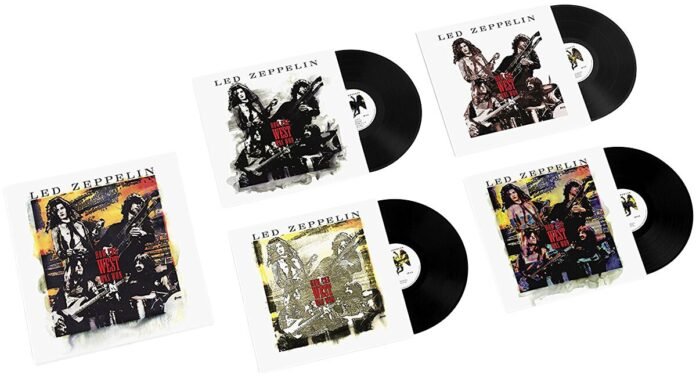
Genre: Hard Rock, Blues and Thunderous Ego
Why It Matters: Because this is what happens when a band hijacks the gods’ PA system and decides to jam for hours.
Context: Recorded over two California gigs in 1972 (L.A. Forum and Long Beach Arena), this live behemoth was shelved for decades while bootlegs did the rounds. Finally unleashed in 2003, it’s a reminder that Led Zeppelin on stage weren’t just loud – they were a cosmic event.
Highlights: A 25-minute version of “Dazed and Confused” that sounds like the band briefly left Earth to battle space demons. “Whole Lotta Love” turns into a medley fever dream and “Stairway to Heaven” appears, swans about majestically, then explodes into guitar wizardry.
Why You Should Listen: Because it’s the sound of four men attempting to bend time, space and probably several local noise ordinances. If you’ve ever wanted to be sonically steamrolled by pure rock excess, this is your moment.
12. From Here to Eternity – The Clash (1999)
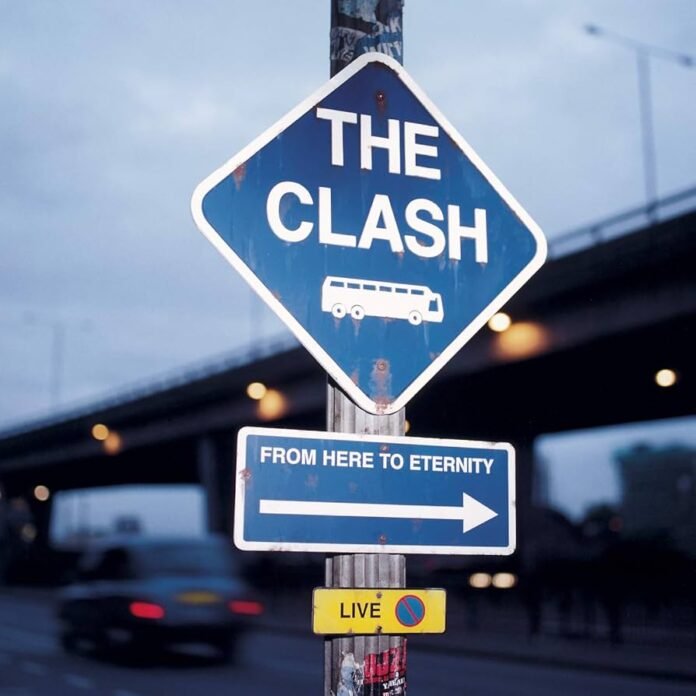
Genre: Punk Rock, Revolution and Righteous Fury
Why It Matters: It proves punk wasn’t just a studio trick – The Clash brought the riot to the stage.
Context: Culled from recordings across the band’s 1978–1982 heyday, this collection captures the sheer power of The Clash in full flight. Joe Strummer snarls like he’s narrating the end of the world and the band sounds like they’re trying to bulldoze the establishment one chord at a time.
Highlights: “London’s Burning” is so furious it might set your speakers on fire. “Career Opportunities” and “Clampdown” crackle with righteous anger, while “I Fought the Law” becomes less a cover and more a manifesto.
Why You Should Listen: Because punk wasn’t meant to be polite. It was meant to shake you awake — and From Here to Eternity does exactly that, with a safety pin through your eardrum.
11. Live at Monterey – The Jimi Hendrix Experience (1967)
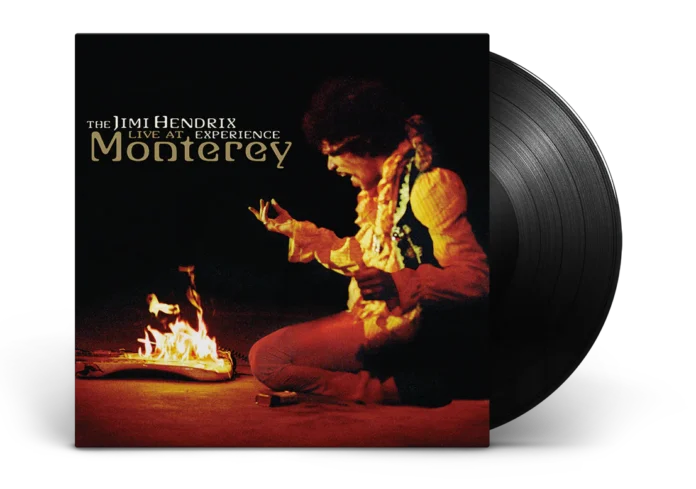
Genre: Psychedelic Rock, Guitar Destruction, and Shirtless Fire Hazards
Why It Matters: It was the moment America collectively realised it had been underestimating a man with a Stratocaster and a match.
Context: Recorded at the Monterey Pop Festival in June 1967, this was Hendrix’s U.S. debut. He ended the set by lighting his guitar on fire. Because why the hell not.
Highlights: His covers of “Like a Rolling Stone” and “Wild Thing” rewire both songs with nuclear swagger. And yes, the flaming guitar bit makes even pyromaniacs blush.
Why You Should Listen: Because it’s not just a concert – it’s a controlled detonation. Hendrix played like his guitar was an alien weapon and he was just learning how to wield it.
10. The Bootleg Series Vol. 5: Bob Dylan Live 1975, The Rolling Thunder Revue (2002)
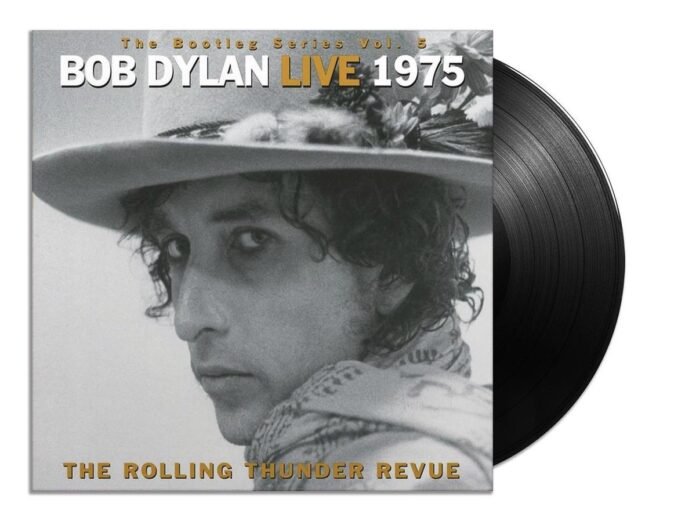
Genre: Folk Rock, Circus Chaos, Dylan with Eyeliner
Why It Matters: It’s Bob Dylan at his most theatrical and unhinged – less “wandering troubadour” and more “ringleader of a traveling rock ‘n’ roll fever dream.”
Context: In 1975, Dylan assembled a ragtag troupe of musicians (including Joan Baez, Mick Ronson and a guy who may or may not have been high the entire time) and took to the road with the Rolling Thunder Revue – a tour that was part protest caravan, part traveling minstrel show, part fever dream. The result: a set of live performances that crackle with chaos and charisma.
Highlights: “A Hard Rain’s A-Gonna Fall” becomes a growling prophecy. “Isis” is manic and mythic. “Tangled Up in Blue” is reworked with such frenzied conviction it might bite you. It’s Dylan, yes, but not the one from your dad’s Greatest Hits CD – this one wears face paint.
Why You Should Listen: Because it’s Dylan reminding the world he’s not a statue in a museum. He’s a breathing, snarling, enigmatic genius who can reinvent himself mid-sentence. This album captures one of those rare times where the reinvention worked spectacularly.
9. Live! – Bob Marley and the Wailers (1975)
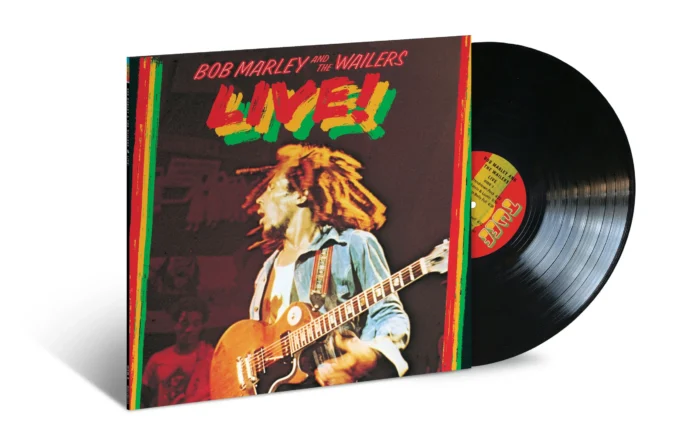
Genre: Reggae, Spiritual Groove, Revolutionary Vibes
Why It Matters: Because this is the moment reggae stopped being a genre and became a global movement and Bob Marley transformed into a prophet with a mic.
Context: Recorded at London’s Lyceum Theatre in 1975, Marley was on the brink of international superstardom. His band, The Wailers, were as tight as a tourniquet and Marley’s voice sounded like it was beamed in from the top of Mount Zion.
Highlights: “No Woman, No Cry” – yes, that version – is here, drenched in reverb and emotion. “Lively Up Yourself” feels like it could spark a street party in a morgue. And “I Shot the Sheriff” arrives with righteous fire and irresistible swing.
Why You Should Listen: Because it’s not just a concert – it’s a spiritual event disguised as a gig. Marley wasn’t performing at the crowd, he was leading them in song, protest and prayer. Play it loud and feel your spine straighten with purpose.
8. I Might Be Wrong: Live Recordings – Radiohead (2001)
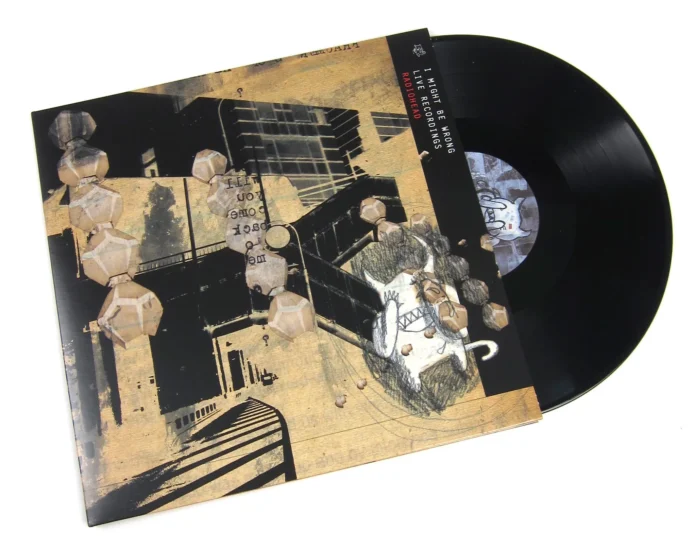
Genre: Experimental Rock, Post-Everything Paranoia, Art School Meltdown
Why It Matters: Because it captures Radiohead in their full post-OK Computer descent into alienation and abstract beauty – but live, without the safety net of studio trickery.
Context: After reprogramming their sound and some listeners’ brain chemistry with Kid A and Amnesiac, Radiohead hit the road with something that resembled a band but sounded more like an emotional operating system glitching beautifully. This album is a minimalist document of that tour – raw, chilly and quietly devastating.
Highlights: “Like Spinning Plates” sounds like a haunted music box trying to apologise. “Idioteque” is pure end-times rave. And “True Love Waits,” in its barebones piano-and-vocal form, could reduce a hardened nihilist to a sobbing puddle.
Why You Should Listen: Because it’s Radiohead doing what Radiohead do best – making emotional turmoil sound elegant, confusing and strangely danceable. And it proves they can conjure the same cryptic dread in real time, with actual instruments and minimal existential buffering.
7. Get Yer Ya-Ya’s Out! – The Rolling Stones (1970)
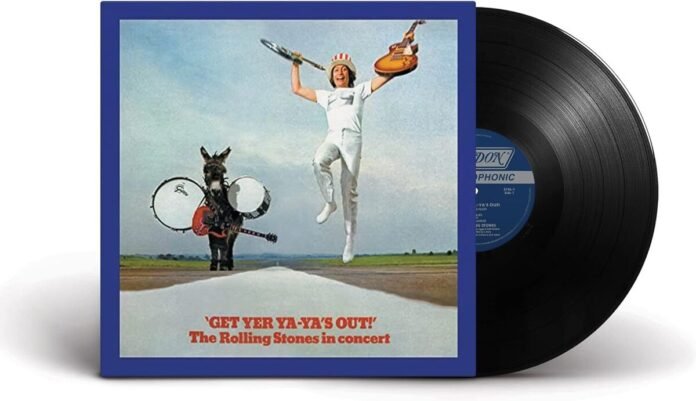
Genre: Swagger, blues and chemical fumes
Why It Matters: It’s the Stones at their peak, live, loud and loose as hell.
Context: Recorded during their 1969 U.S. tour – shortly before the tragic mess of Altamont – this album captures the band teetering on the edge of chaos with grins on their faces and probable stimulants in their systems.
Highlights: “Jumpin’ Jack Flash” and “Sympathy for the Devil” stomp like they own the arena. Mick Jagger is in full peacock mode, while Keith Richards riffs like he’s trying to seduce a thunderstorm.
Why You Should Listen: Because this is what rock and roll sounds like before the lawyers and life coaches took over.
6. Stop Making Sense – Talking Heads (1984)
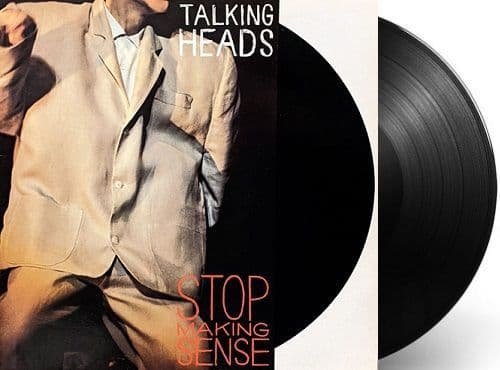
Genre: Art-funk with a side of existential dread
Why It Matters: It turned the live concert into performance art without disappearing up its own rear end.
Context: Directed by Jonathan Demme, this is as much film as it is album. It begins with David Byrne solo with a boombox, slowly building into a full band with synchronised weirdness and astonishing rhythm.
Highlights: “Psycho Killer” with just Byrne and a guitar is unnerving and brilliant. “Once in a Lifetime” becomes a spiritual awakening for anyone who’s ever questioned late capitalism.
Why You Should Listen: Because it makes you want to dance, think and probably have an identity crisis all at once. Also, the big suit. The really big suit.
5. The Bootleg Series Vol. 4: Live 1966 – Bob Dylan (1998/1966)
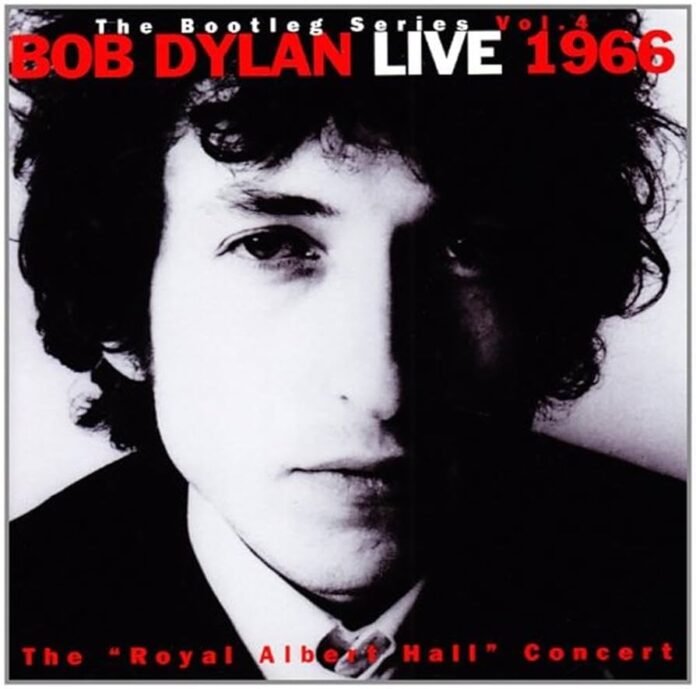
Genre: Folk, Electric Shock Therapy, Mid-60s Cultural Uproar
Why It Matters: Because this is the exact moment Bob Dylan stopped being a protest poet with an acoustic guitar and transformed into something altogether weirder, louder and far more divisive. It’s the sound of a generation splitting in real time.
Context: Despite the misleading “Royal Albert Hall” label (it was actually recorded in Manchester), this album documents the most mythologised moment in live music history: Dylan “going electric.” Folk purists were aghast. One famously shouted “Judas!” Dylan’s response? “I don’t believe you… you’re a liar!” before instructing The Hawks (later The Band) to “play it f***ing loud.”
Highlights: The acoustic first half is pristine and bitter, like a man crooning into a void of self-righteous boos. The electric second half? Pure, snarling defiance. “Like a Rolling Stone” becomes a venomous mission statement. “Ballad of a Thin Man” is spat with such loathing it should come with a hazard warning.
Why You Should Listen: Because it captures the precise moment when an artist shed his skin in front of a hostile crowd and became a legend. It’s not just a concert – it’s cultural arson, caught on tape.
4. MTV Unplugged in New York – Nirvana (1994)

Genre: Grunge, but with candles
Why It Matters: It captured the band at their most vulnerable and accidentally became their wake.
Context: In November 1993, Nirvana did what few thought possible: they sat down, turned the amps off and played quietly. There were no hits, no “Teen Spirit,” just Cobain baring a raw and uncomfortable kind of honesty.
Highlights: Their cover of Lead Belly’s “Where Did You Sleep Last Night” is one of the most haunting moments ever televised. You can practically hear Cobain slipping through the cracks of reality.
Why You Should Listen: Because it’s the sound of a man trying to make peace with ghosts in front of a room full of people who didn’t realise they were watching a suicide note in slow motion.
3. Live at the Apollo – James Brown (1963)
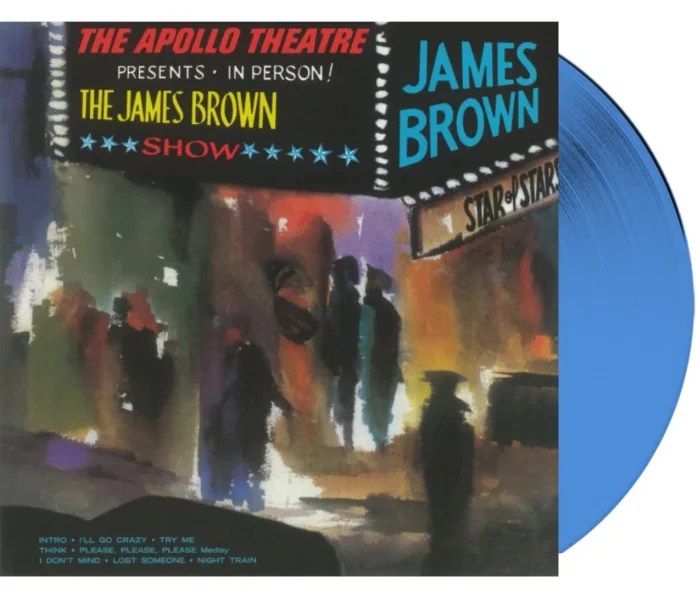
Genre: Soul, Funk and the Gospel According to Screaming
Why It Matters: No James Brown, no funk. No funk, no hip-hop. No hip-hop… you get the picture.
Context: James Brown put up his own money to record this. His label thought it was commercial suicide. Instead, it sold by the truckload and helped solidify Brown as a cultural wrecking ball.
Highlights: Every shriek, every groan, every band cue shouted mid-song is delivered like his life depends on it. “Please Please Please” is practically a religious experience. He leaves the stage and then comes back because he knows you can’t handle your feelings.
Why You Should Listen: Because Brown doesn’t just perform. He exorcises demons. He rips the stage up by its roots and hands you your own heart in a sweaty paper bag.
2. Live at Leeds – The Who (1970)
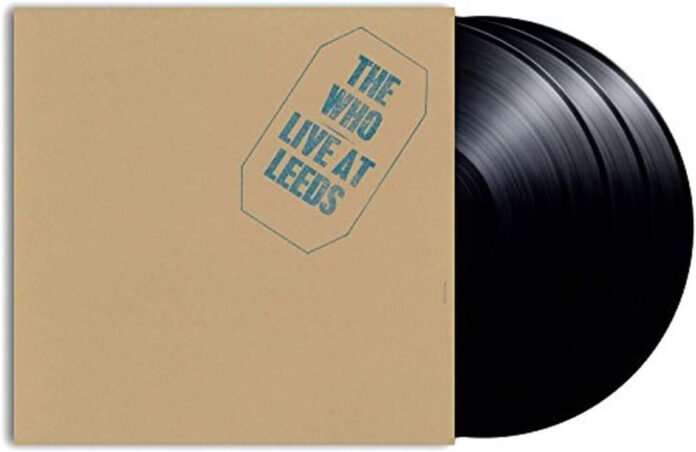
Genre: Rock, Chaos and Drumsticks as Weapons
Why It Matters: This is what a rock band sounds like when they’re three chords away from detonating.
Context: Recorded at the University of Leeds, this is The Who at their most feral. Not quite polished. Definitely not sober. And all the better for it. It sounds like they wired up a pub brawl and hit “record.”
Highlights: Their 15-minute take on “My Generation” might as well be its own thesis on musical destruction. Keith Moon attacks his drum kit like it owes him money. “Substitute” and “Magic Bus” veer into manic, barely-controlled territory.
Why You Should Listen: Because sometimes music should feel like it’s about to punch you in the face. It’s the sonic equivalent of being trapped in a lift with four wild-eyed prophets screaming at you about rock ‘n’ roll.
1. Live at Folsom Prison – Johnny Cash (1968)

Genre: Country/Gospel/Rebellion Behind Bars
Why It Matters: It wasn’t just a concert – it was a high-stakes PR gamble in a prison cafeteria.
Context: On January 13, 1968, Johnny Cash walked into California’s Folsom State Prison and delivered one of the rawest, most authentic performances in music history. Performing to an audience of inmates, many of whom were closer to sociopath than superfans, Cash used the occasion to reclaim his outlaw image and breathe new life into a flagging career.
Highlights: “Folsom Prison Blues” obviously hits different when the guy next to you actually has shot a man in Reno. The audience’s roars after every grim lyric turn this into a soundtrack for the criminally inclined. “Greystone Chapel,” written by inmate Glen Sherley, is also a powerful reminder that talent can thrive in the bleakest places.
Why You Should Listen: If you want to hear a man walk the line between myth and mortal, this is it. It’s not just music – it’s performance art with parole officers.
Honourable Mentions (a.k.a. “Why Isn’t [Insert Album] On Here?”) Let Us Know Below!
Look, we get it. Your favourite isn’t here. Maybe it just missed the cut. Maybe it’s secretly rubbish. Or maybe we’re just bitter and have a grudge against that band. Either way, here are a few albums that almost made it…
- Pearl Jam – Live on Two Legs
- Rush – Exit… Stage Left
- Elvis Presley – ’68 Comeback Special
- Tori Amos – Live at Montreux 1991/1992
- Rage Against the Machine – Live at the Grand Olympic Auditorium
- Portishead – Roseland NYC Live
- Wilco – Kicking Television: Live in Chicago
- The Replacements – For Sale: Live at Maxwell’s 1986
- Leonard Cohen – Live in London
👇 Scroll down, leave a comment and join the conversation.
Let’s settle the debate: what’s your definitive top 5 live albums of all time? or what did we miss off our list?
What Makes a Great Live Album, Anyway?
It’s not just about pitch-perfect vocals or flawless musicianship. In fact, if it sounds too clean, it probably belongs in a dentist’s waiting room. A great live album should feel slightly dangerous — like someone might get electrocuted mid-guitar solo. It should have tension, sweat, banter, mistakes, a crowd that sounds like it’s about to riot, and at least one moment that makes you shout “bloody hell” in public.
Table of Contents
Where to Start If You’re New to Live Albums
New to this sweaty, unfiltered world? Start here:
- Nirvana – MTV Unplugged in New York: For beautifully broken acoustics.
- James Brown – Live at the Apollo: For funk so tight it might arrest you.
- Johnny Cash – At Folsom Prison: For outlaw energy and genuine danger.
- Beyoncé – Homecoming: For perfection, polish and the sheer audacity of ambition.
- The Who – Live at Leeds: For a noise complaint waiting to happen.
Final Thoughts: When the Tape Kept Rolling
Live albums remind us that music isn’t just about notes – it’s about moments. About the band losing it, the crowd screaming it back and the glorious chaos in between. They’re the proof that something actually happened. And in a world full of fake noise and lip-synced “experiences”, that’s something worth turning up very, very loud.



